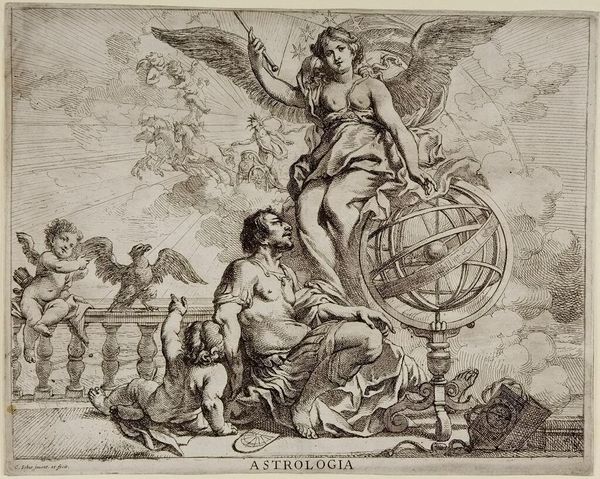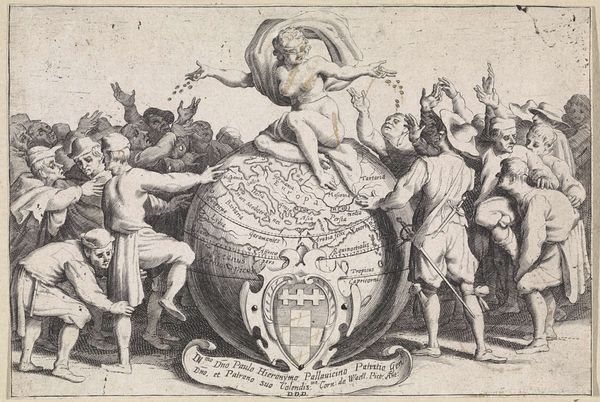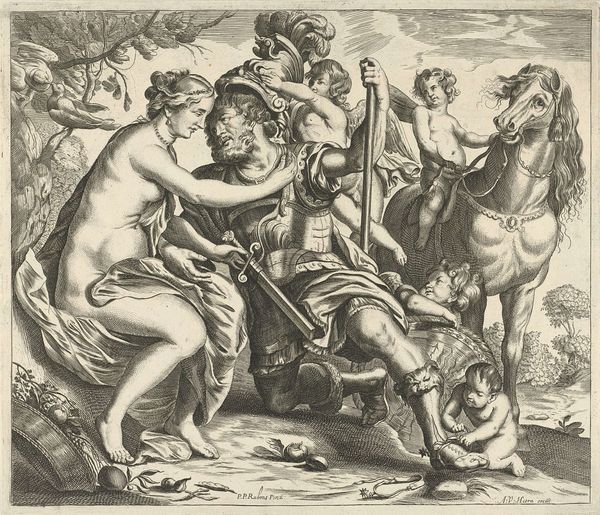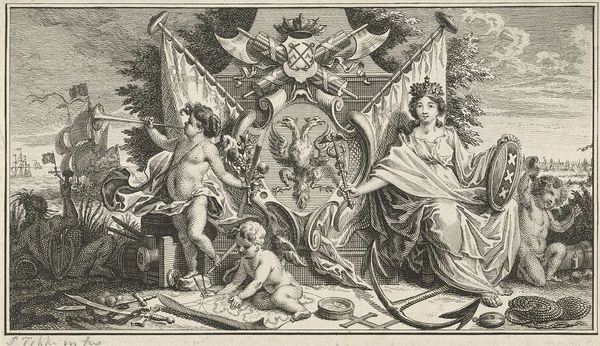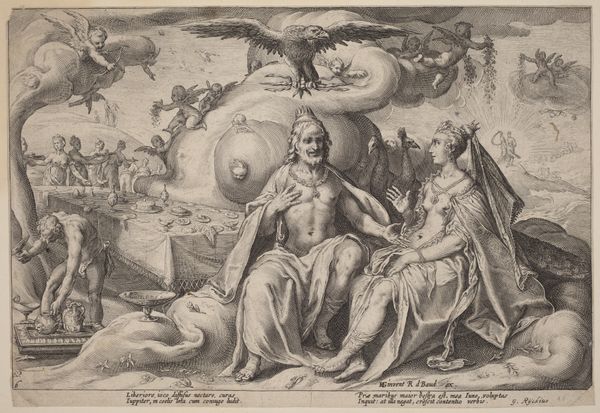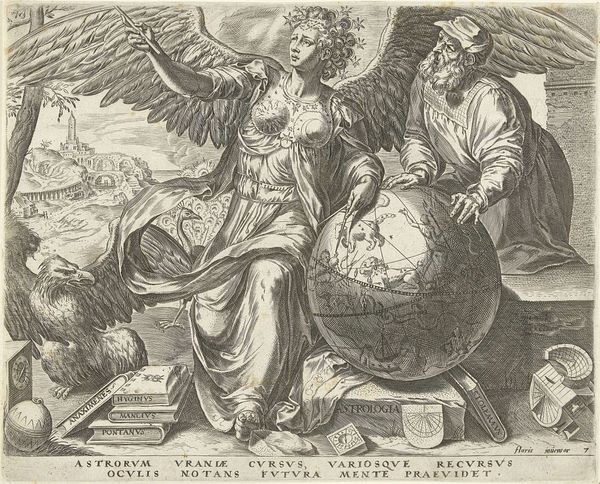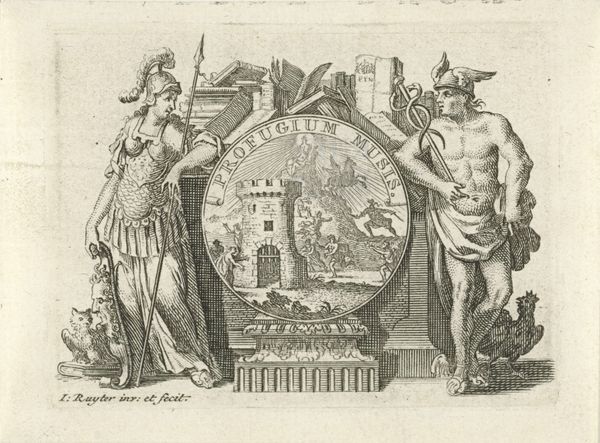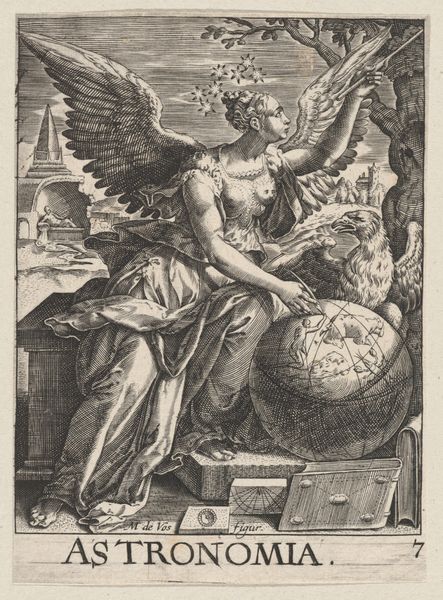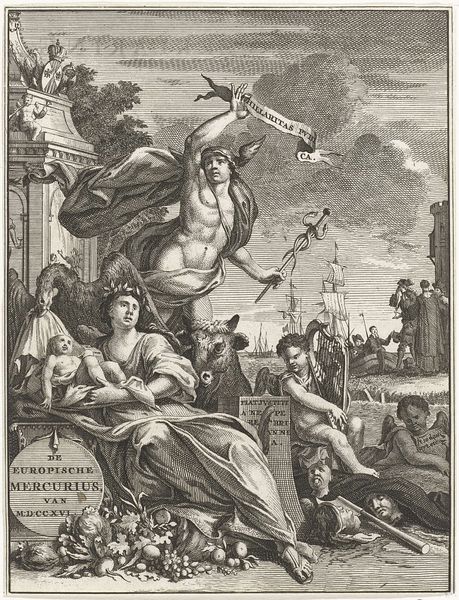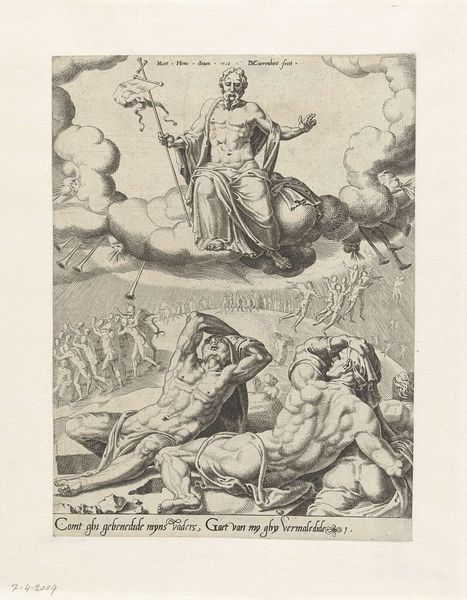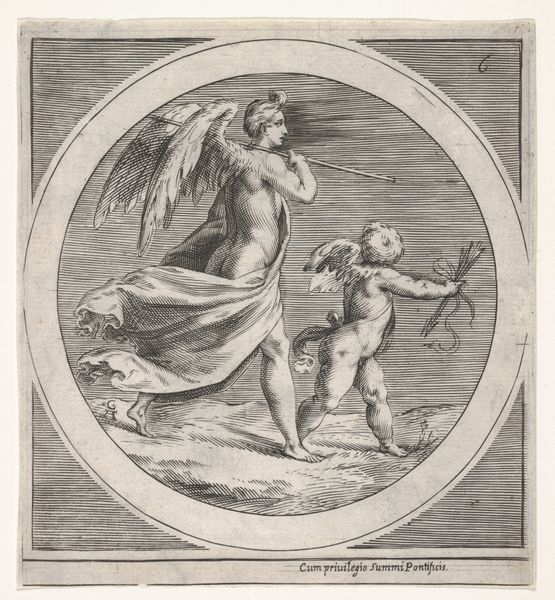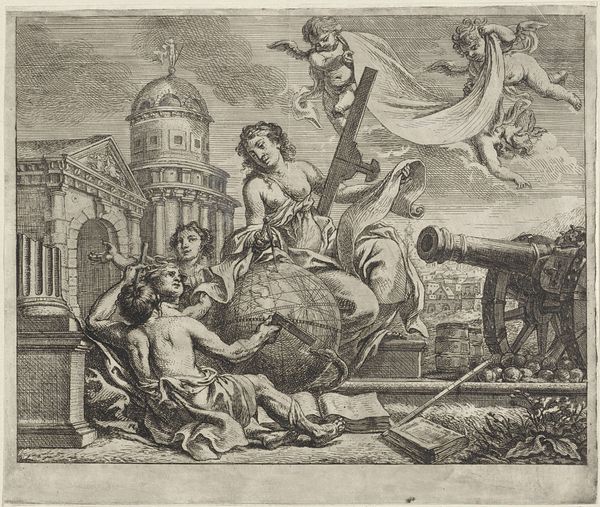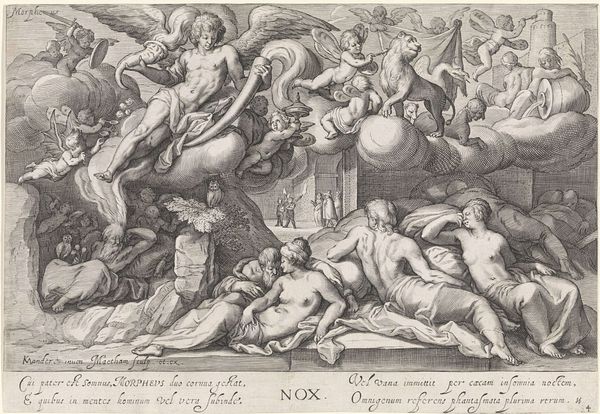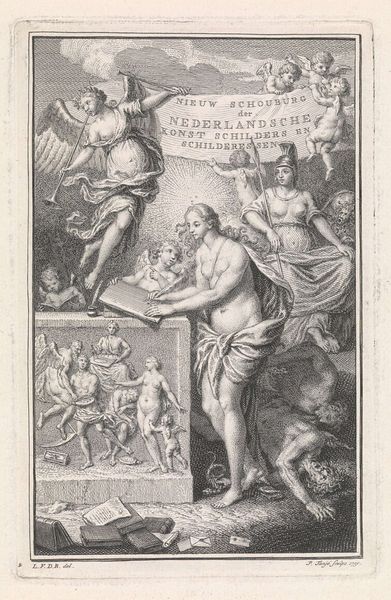
engraving
#
allegory
#
baroque
#
pen sketch
#
figuration
#
history-painting
#
engraving
Dimensions: height 256 mm, width 329 mm
Copyright: Rijks Museum: Open Domain
Curator: It feels immediately ethereal. Is that an angel dominating the scene, holding some kind of scepter? Editor: Indeed. What we have here is Cornelis Schut's engraving, "Astrologia," created sometime between 1618 and 1655. Currently residing at the Rijksmuseum, it exemplifies the Baroque style, exploring themes of allegory and figuration. Notice how the lines create such dynamism. Curator: The rendering is certainly intricate, giving a great sense of volume. But it strikes me that all that detail can make the whole thing feel a bit static. Are we meant to focus on that central male figure then? Is he supposed to be contemplating the heavens? Editor: One could interpret it that way, yes. However, my inclination is to delve into the engraving technique itself. The precise hand that wielded the tools, etching lines onto the plate to produce this image is significant. This engraving’s creation relies on skilled labor, turning a base material into art for consumption. The means of production shape our understanding. Curator: Fair point about the production process, but shouldn't we also consider the composition as a carefully constructed visual argument? Note how the female figure towers over him—a visual assertion of the importance of astrology itself! I see allegorical references everywhere. Editor: Certainly, allegory plays a role, but focusing solely on meaning risks overlooking the work's physicality. This isn't merely a window onto a story but an object with a history and the marks of its making. How the ink sits on the paper, the pressure applied to create depth and shadow—these material aspects offer insights into artistic practices and cultural values of the time. Curator: A good challenge. Considering both angles offers a more comprehensive picture, doesn't it? Editor: Absolutely. We must look beyond the immediate aesthetic and narrative to understand how artworks are conceived, produced, and circulated within society. Ultimately, it is up to our audience to come up with their own personal conclusion when faced with an image like this.
Comments
No comments
Be the first to comment and join the conversation on the ultimate creative platform.
